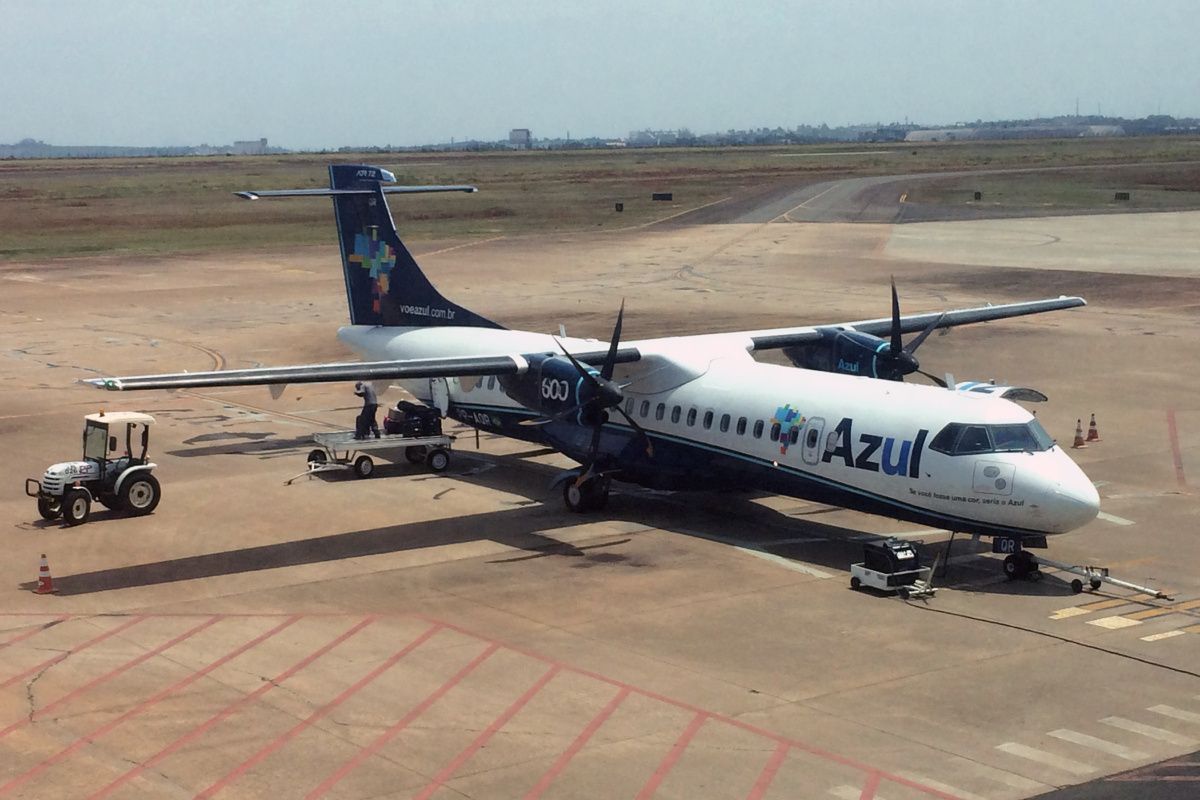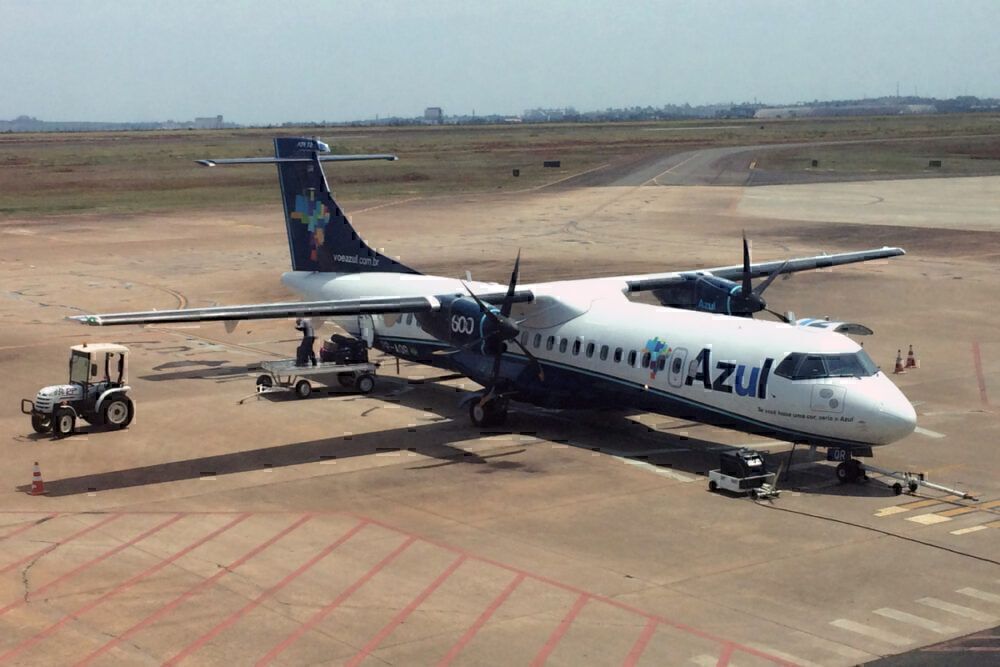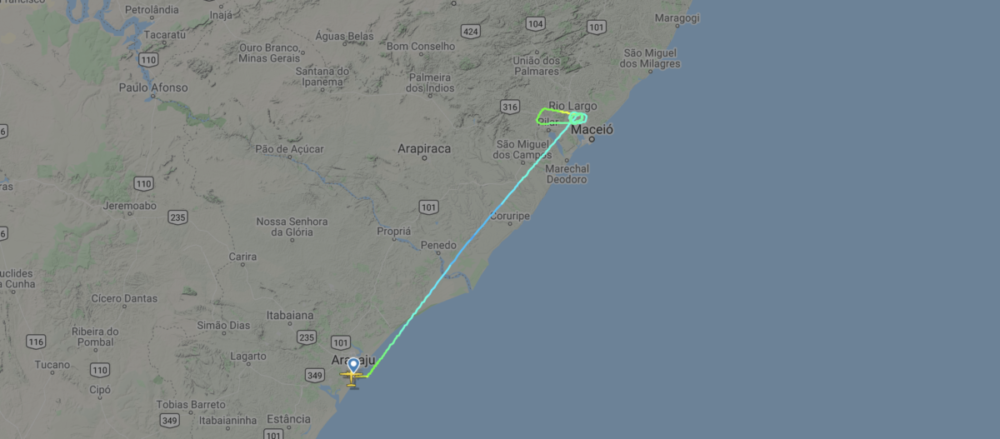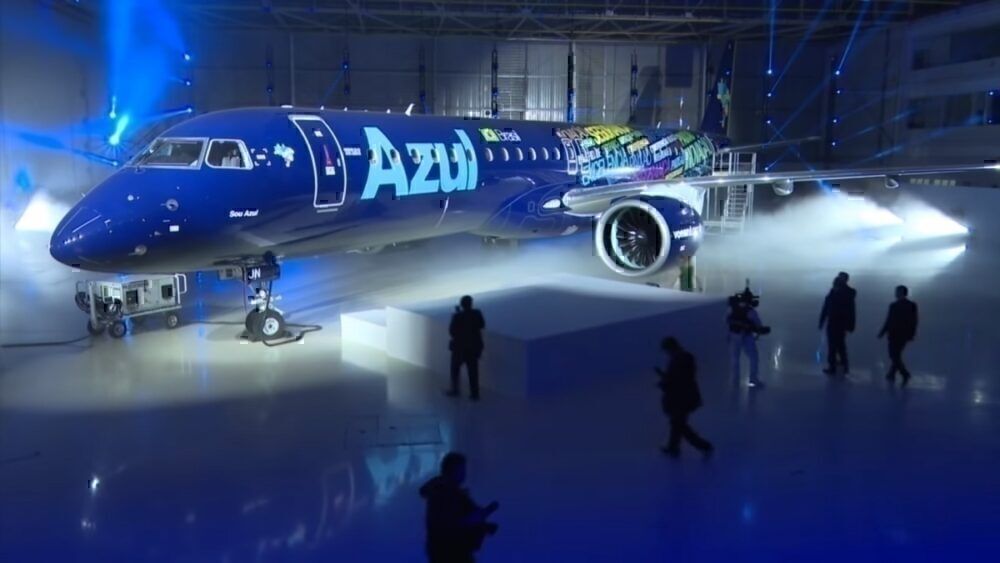An Azul ATR 72 en route to Recife in Brazil has had to perform a landing on one engine after the second one suffered problems in flight. The aircraft landed safely one hour after the incident last Wednesday.
What happened?
According to The Aviation Herald, an Azul Linhas Aereas Avions de Transport Regional ATR-72-212A was in flight from Aracaju to Recife in Brazil, when the plane experienced engine problems.
The issue occurred when the plane, tail number PR-AQM, was climbing out of Aracaju airport. At around 15,000 feet, the engine on the left-hand side of the aircraft (PW127M) experienced erratic behavior.
After a moment of attempting to diagnose the issue, the aircrew decided to shut down the engine and then divert to Maceio. This airport is around halfway between the two cities, and the aircraft had to circle burning off fuel before it could land.
The aircraft landed safely with only a service interruption affecting the passengers. The whole incident occurred over an hour.
Simple Flying reached out to Azul for comment.
"Azul informs that, due to technical problems in the aircraft, flight AD4437 (Aracaju-Recife) switched to Maceió airport yesterday (2). The company points out that the landing and disembarkation of Customers happened normally. The aircraft has undergone maintenance and Customers will follow other flights to their final destination. Azul regrets any inconvenience to its Customers and emphasizes that actions like this are necessary to ensure the safety of its operations."
Why does Azul use turboprops?
Brazil is a country perfectly suited for turboprop aircraft. A vast country with mountainous (and jungle) conditions, many of the more regional airports have short runways or are located in somewhat hazardous localities. By using turboprop aircraft, airlines like Azul can operate fuel-efficient regular services to more significant hubs.
To put this in perspective, the turboprop is such a popular plane in Brazil that over half, or 61%, of all private business aircraft are turboprop planes (compared to a significant share of business jets in the United States).
Plus, thanks to the smaller size of the aircraft, it has allowed Azul to recover quickly from the current crisis. With fewer seats to fill, the airline has fewer costs involved in continuing operations against its rivals in the Brazilian marketplace. Thus the airline is confident that they will be on track to operate at least 40% of its entire fleet by December this year, according to CAPA.
Azul has 32 ATR 72 turboprop aircraft that it uses to feed passengers to its bigger fleets of Embraer jets and Airbus A320 aircraft. This number actually makes the airline the second-biggest operator of the type, just behind the 64 ATR-72s operated by Wings Air as part of Lion Air (Indonesia).
They have an all-economy configuration layout with 70 standard seats with 31 inches of legroom. The airline operates the low-cost-carrier model, where additions such as exit rows, seat bookings, and more are available for purchase.
What do you think of this news? Have you flown onboard this plane type? Let us know in the comments.




